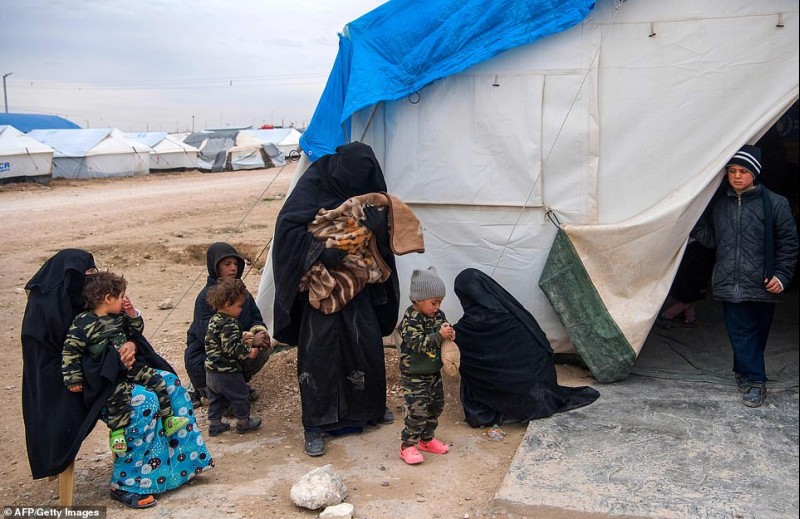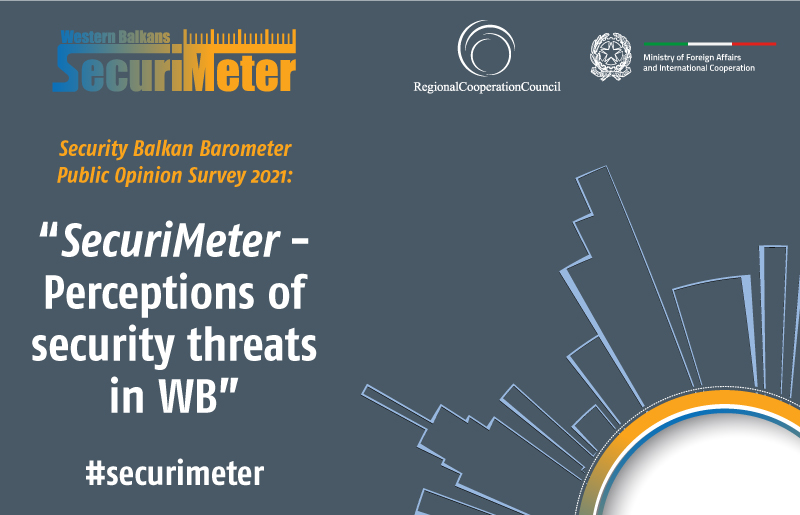- Home/
- News
The Delicate Balance Between Securitization and Humanitarianism in the Context of Counterterrorism
Securitization of individuals with potential links to terrorist organizations or a potential susceptibility to radicalization has been an issue for a long time but has come to the forefront of the public discourse now that Western nations have found themselves trying to manage the return of foreign fighters from the ISIS-held territories in Syria and Iraq. In addition to the returning men and women, nations have struggled to adequately attend to returning children, who may or may not be indoctrinated but who are likely severely traumatized. The issue of balancing the tension between security and humanitarian efforts is not limited to Western nations; in fact, traumatized individuals potentially turning towards extremism and violence is an even more pressing issue for the recovering societies in the Middle East.
The link between mental health conditions and terrorist action is most evident in the studies on lone-actor terrorism. For instance, a 2016 policy paper by van Zuijdewijn and Bakker found so-called lone wolves to be more likely to suffer from mental health issues than the general population.[1] They conclude that for lone wolves, it is of crucial importance to have a multi-stakeholder approach to risk assessment as well as lowering social and institutional barriers for mental health treatment.
Such approaches are not getting much of a hearing since the downfall of ISIS and the influx of returnees to Europe. In combination with the still dire situation in the “caliphate” areas, the tension between securitization and humanitarianism have intensified. Mental health is not only an issue in the context of lone-actor terrorism in the West. Trauma and the long-term mental health implications of experiencing severe violence are now a visibly pressing issue for a much larger group of individuals with the potential to perpetrate terrorist action. While the aftermath of every violent conflict carries the risk of trauma causing new cycles of violence, the rise of ISIS and its subsequent attacks around the globe have captured the attention of Western countries. Rather than solely having to fear a destabilized region of Iraq and Syria with potentially new civil or sectarian war scenarios, the ‘success’ of ISIS is testimony to the global threat renewed cycles of extremism and violence could bring.
Ian Bradbury, a former member of the Canadian armed forces and founder of a non-profit organization engaged in peace support and civil development, is one of the voices highlighting the risk of a new cycle of violence originating with those who came in contact with the so-called Islamic State.[2] He says victims could potentially become the next perpetrators, especially those whom he calls the ‘lost boys’. While there are humanitarian aid, mental health and other programs for women and girls, including those of Yezidi origin, there are no programs for male children, who were often indoctrinated and forced to perpetrate violence. He states “The consequence of not recognizing or treating these ‘Lost Boys’ should be clear. Within five to ten years, we will most likely be fighting many of them, as they are at very high risk of becoming the next generation of violent perpetrators and/or extremists”.[3] While a potential security risk in the future, these victims are currently a humanitarian concern, which shows the close linkage between security and civil development after violent conflicts.
While the recognition that victims of violent conflict carry a higher risk to potentially become a perpetrator later is not new,[4] the now global reach of terrorist organizations magnifies the risk extremists pose not only to their immediate surroundings but to global security as a whole. The international community now faces the dilemma of choosing between securitization and humanitarian efforts, domestically and globally, especially in the regions suffering the consequences of ISIS destruction.
Domestically, these countries need adequate strategies for handling returning foreign fighters as well as their children. To be very clear, traumatized minors even if indoctrinated need help from social services not surveillance or ‘checks’ from the police. A delicate balance needs to be struck weighing security concerns against humanitarian efforts in general, but children and teenagers require special protection regardless of their parents’ ideological beliefs. The same holds true for minors in the former ISIS territories. The experience of violence and brutality as well as the likely indoctrination by parents or fighters has left the children vulnerable to exploitation of any kind.
If Western coalition forces content themselves with “defeating” the group militarily, i.e. removing ISIS from overt control of territory, then they have merely scratched the surface of a long-term solution. As Bradbury vividly shows, overemphasizing securitization and underemphasizing humanitarian efforts will result in the initiation of a new cycle of violence. The children deprived of their childhood by the war(s) will turn into the extremists of tomorrow.
Regarding adults, the issue is still more complicated. While soft power efforts must be strong in order to prevent as many radicalization processes and potential attacks as possible before they occur, security concerns can and should be part of the equation. To which extent this should be the case is impossible to spell out as a generalized claim. However, what is important to note is the balance between securitization and soft power efforts needs to remain exactly that: a balance. On the one hand, too much emphasis on securitization may lead to disillusionment with mainstream society that can fuel ‘cognitive openings’ to extremist ideas.[5] On the other hand, nobody can deny the necessity of a security dimension in counter-terrorism efforts and police and security services are potent tools to decrease the risk of violent acts. In every stage of counter-terrorism, from PVC to CVE, from de-radicalization efforts to legal charges, this balance needs to be upheld. Otherwise, counter-terrorism efforts fuel the extremism they seek to eradicate.
__________________________________________________________
References
[1] Van Zuijdewijn, J. and Bakker, E. (2016). Lone-Actor Terrorism. Policy Paper 1: Personal Characteristics of Lone Actor Terrorists. Retrieved from: https://rusi.org/sites/default/files/201602_clat_policy_paper_1_v2.pdf
[2] Tat, E. (2018). Interview with Ian Bradbury: Daesh collapse, the Kurds, and Iraq today. Retrieved from: http://natoassociation.ca/interview-with-ian-bradbury-daeshs-collapse-the-kurds-and-iraq-today/
[3] Bradbury, I. (2019). The Lost Boys of the 21st Century. Retrieved from: https://www.youtube.com/watch?v=xYDgIxX90u8&fbclid=IwAR2wXJu4ZvXzsaKjIMzSR6VmB3O2Zf1I4ttUG07QkZ-PCwx-i4ZS9ovwQgU
[4] Smith, A. (2005). The „Monster” in All of Us: When Victims Become Perpetrators. Retrieved from: https://scholarship.law.georgetown.edu/cgi/viewcontent.cgi?article=1218&context=facpub
[5] Wiktorowicz, Q. (2005). Radical Islam Rising: Muslim Extremism in the West. Rowman and Littlefield: London
By: Linda Schlegel
Source: Link



 Development of specialized PCVE web site is funded by EU FUNDS CN 2017-386/831 - "IPA II 2016 Regional Action on P/CVE in the Western Balkans"
Development of specialized PCVE web site is funded by EU FUNDS CN 2017-386/831 - "IPA II 2016 Regional Action on P/CVE in the Western Balkans"